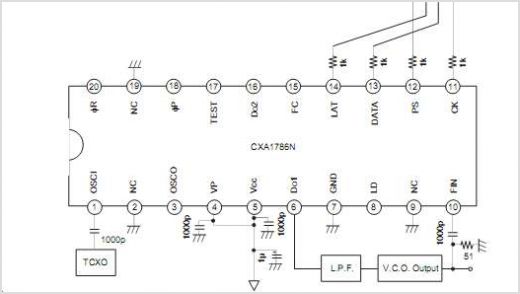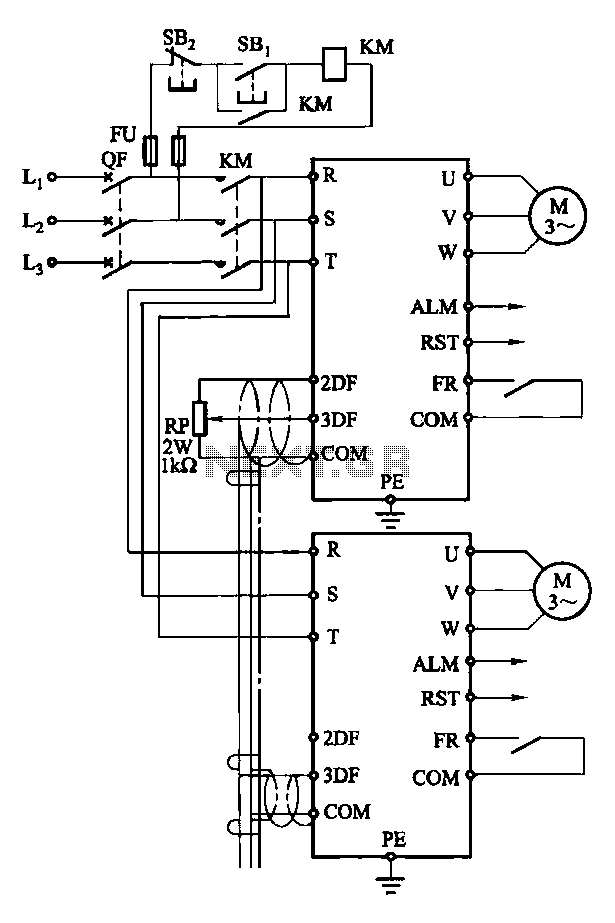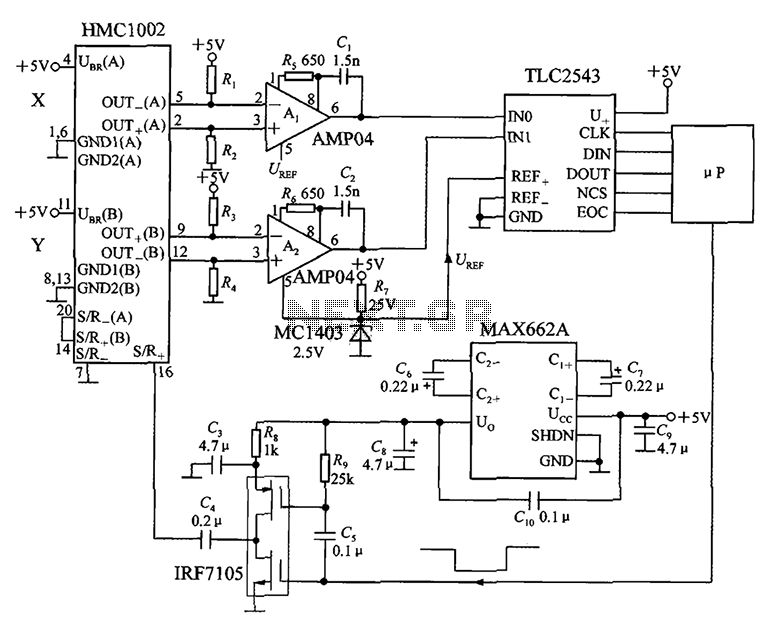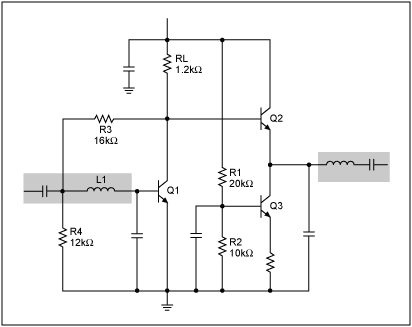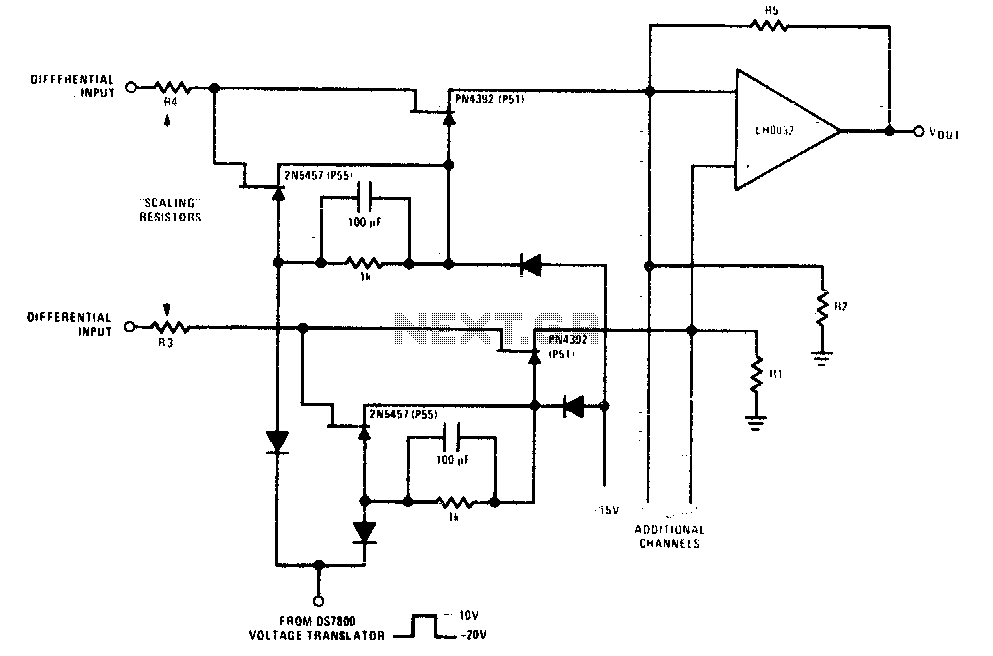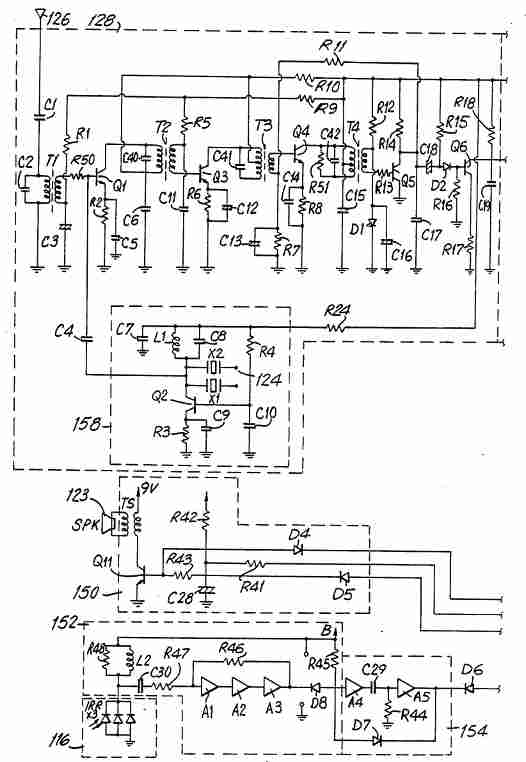
handheld RF-Powermeter for multiple sensors up to 12 GHz
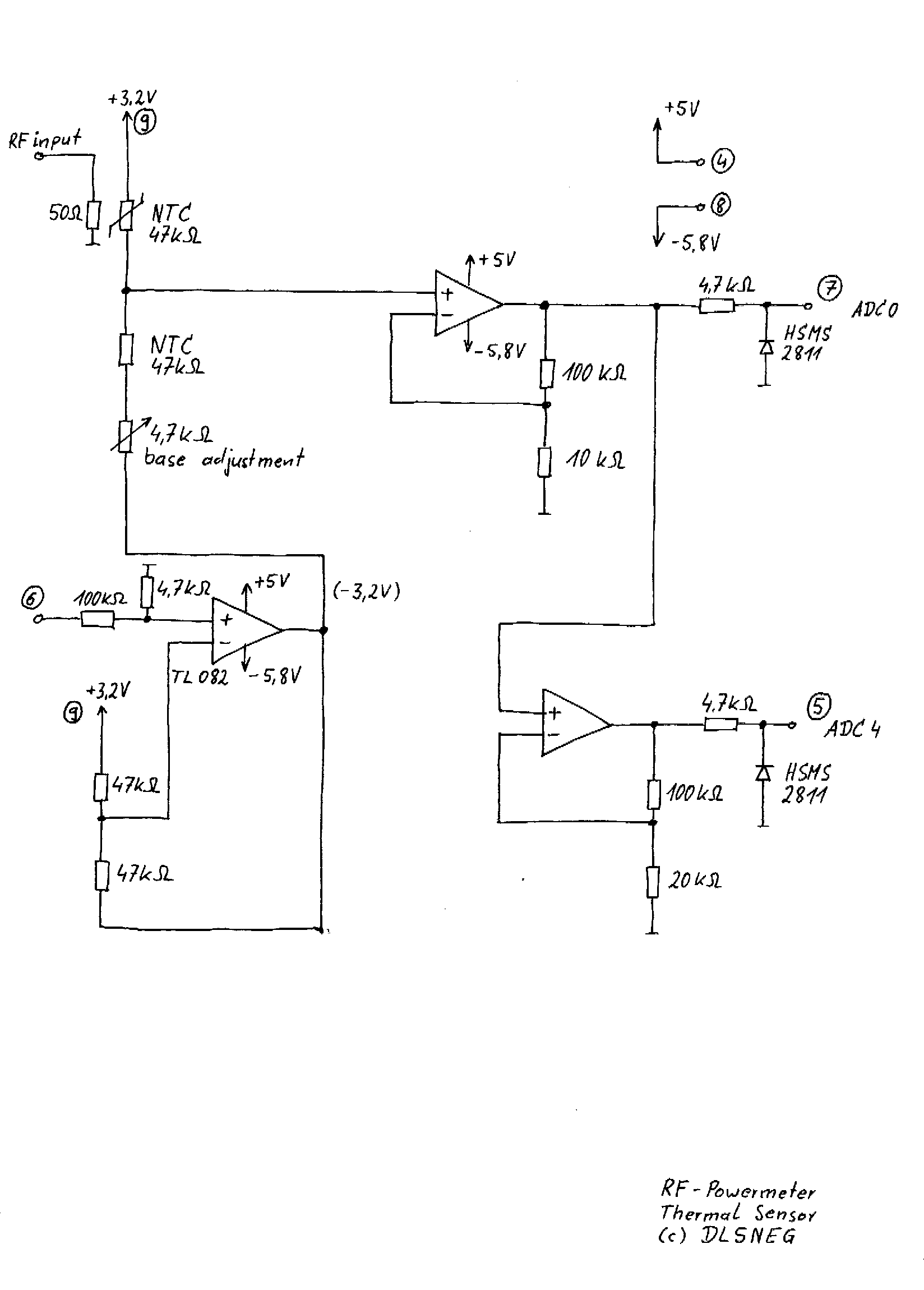
A few years ago, a diode-sensor based RF power meter was built using a 68HC11 microprocessor. Prior to that, an analog RF power meter with a thermal power sensor was developed. The datasheets for logarithmic amplifiers, which promised a measurement bandwidth of up to 2.5 GHz, were particularly interesting. After gaining familiarity with the Atmel AVR microprocessor family, the next logical step was to create a versatile power meter incorporating all three measurement principles. This resulted in a compact, battery-powered power meter with external power sensors, named UMD (Universal Measurement Device), which utilized tiny surface mount components. However, certain components, such as a mobile phone LCD display, were difficult to source, and the small size of the device made it challenging to compare with documentation. As the circuit underwent several changes during development, the accuracy of the schematics could not be guaranteed. When approached by Belgian radio amateurs to write an article for their annual magazine, the decision was made to rebuild the circuit on a larger board using wired components and a standard 4x16 character LCD display, referred to as the article-breadboard version. This breadboard remained unused for several months until it was repurposed to create another power meter. Since the UMD already featured external sensors, the new design integrated these sensors into the meter housing. Given that the log-amp sensor was seldom used, the design was simplified to include only two sensors: a diode sensor and a thermal power sensor. This new iteration was named DSPM03 (Dual Sensor Power Meter 03). For those interested in replicating a power meter, the DSPM03 is recommended. The older design files can be found at the specified hardware and firmware locations. The power meter comprises two main components: the digital section, which includes the processor (with ADCs), the display, and batteries; and the sensor components that convert RF input power into an analog DC level readable by the ADCs. The software utilizes a transfer function from RF power to DC level for accurate calculations of RF input power, which is then displayed on the LCD. A special mode allows for the display of the "raw ADC value," representing the DC voltage level prior to RF power transformation. Detailed instructions on constructing a diode sensor for RF signal conversion to DC voltage are available on a separate page. The frequency response is minimal, remaining below 0.5 dB up to over 3.5 GHz, indicating that the system's accuracy primarily relies on the quality of the software's lookup table correlating DC voltage to RF input power. The schematic for the thermal power sensor used in the DSPM03 is also available, with plans for an additional page providing in-depth information on thermal sensors and best practices for their construction. Variations in NTC resistance values may necessitate the inclusion of a potentiometer for base adjustment to ensure accurate readings.
The DSPM03 design is centered around two types of sensors, each serving a distinct purpose in measuring RF power. The diode sensor is designed to convert RF signals into a corresponding DC voltage, which is then processed by the microcontroller. The diode sensor's characteristics, including its frequency response and linearity, are critical for achieving accurate measurements across a wide frequency range. The thermal power sensor operates on a different principle, utilizing the heat generated by RF power absorption to produce a measurable voltage. This dual-sensor approach allows for enhanced versatility in measurement, accommodating varying RF signal characteristics.
The digital section of the DSPM03 is powered by an Atmel AVR microcontroller, which handles data acquisition through integrated ADCs. The microcontroller also manages the display output, providing real-time feedback to the user regarding RF power levels. The choice of a 4x16 character LCD display facilitates clear and concise visualization of measurement data, including both the calculated RF power and the raw ADC values.
In terms of construction, the DSPM03 is designed to be user-friendly, with a focus on accessibility for hobbyists and professionals alike. The use of standard components, such as the 4x16 LCD display and commonly available resistors and potentiometers, simplifies the assembly process. Detailed schematics and software documentation are provided to assist users in replicating the design accurately.
Calibration of the DSPM03 is an essential step to ensure measurement accuracy. The software's lookup table must be populated with precise values correlating DC voltage levels to RF power measurements. This calibration process may involve testing the device with known RF power levels and adjusting the lookup table accordingly to achieve optimal performance.
In summary, the DSPM03 represents a sophisticated yet accessible solution for RF power measurement, combining innovative sensor technology with robust digital processing capabilities. The integration of both diode and thermal sensors, along with a user-friendly interface, positions the DSPM03 as a valuable tool for both amateur and professional radio enthusiasts.A couple of few years ago I had build a diode-sensor based RF powermeter using a 68HC11 microprocessor. Even before that I had build an analog RF powermeter with thermal power sensor. And I found datasheets of logarithmic amplifiers very interesting, that promised a measurement bandwidth of up to 2.
5GHz. When I had familiarized myself with the Atm el AVR microprocessor family, it was just a logic step to build myself a nice powermeter for all three measurement principles. So I did that and build a very small, battery powered powermeter with external power sensors. I called it UMD, the Universal Measurement Device. It was completely done with tiny surface mount components. Wanna see Click here for a picture. Or here for another picture. Here the UMD is measuring a beacon transmitter with the diode sensor. Unfortunately the device contained a few components that were very had to get (e. g. a mobile phone LCD display) and was so tiny that it was difficult to compare it with my documentation.
I had changed the circuit a couple of times during the development, so I could not guarantee that my schematics were correct. When I was asked by some Belgian radio amateurs to write an article for their annual magazine, I decided to rebuild the circuit on a larger board with wired components and a standard 4x16 character LCD display.
Lets call that version article-breadboard version. The breadboard was laying around for a few month until I decided that I should rather use it to build myself another power meter. Since I already had the UMD with the external sensors, I have included the sensors now in the meter housing.
I had almost never used the log-amp sensor, so I went for a design with only two sensors: a diode sensor and a thermal power sensor. Since it was kind of a third approach I have named this version DSPM03, the Dual Sensor Power Meter 03.
If you want to copy one of my power meters, I strongly recommend to copy the DSPM03. If you are interested in the older design, feel free to have a look at the unsupported files. For the hardware at hardware/ and for the firmware at firmware/. The Powermeter consists of two logic components. One is the digital part, consisting of the processor (including the ADCs), the display and the batteries. The other component is one of different sensors that transform the RF input power into an analog DC level that can be read by the ADCs in the digital part.
The software knows the transfer function from RF power to DC level of the different sensors and is therefore able to calculate the RF input power from the read DC level. The result of the calculation is then written to the LCD. In a special mode the software also displays the "raw ADC value", i. e. the DC voltage level without transformation to RF power. Click here to see a picture of the open case. Diode Sensor: How to build a diode sensor that converts an RF signal to a DC voltage is extensively discussed on a separate page, just click here to view it.
The frequency response (i. e. the unwanted change in behavior over frequency) is really low, it is below 0. 5dB up to more than 3. 5GHz. So the accuracy of the complete system depends mainly on the quality of the lookup table in the software, which holds one pair of values (DC voltage vs. RF input power) for every dB of input power. Thermal Power Sensor: Here you find the schematic of the thermal power sensor that I have build for the DSPM03.
Soon I will add an extra page that gives a lot of background information on thermal sensors and the do`s and don`ts for building them. If you have build the sensor, you will notice that the NTCs are never exactly of the same value. In my circuit the lower NTC was of a bit lower resistance. To compensate for that, I have included the 4. 7kOhm potentiometer named "base adjustment". You may have to put a poti in series to the other resistors if that one is lower in your case. If you need help for doing 🔗 External reference
The DSPM03 design is centered around two types of sensors, each serving a distinct purpose in measuring RF power. The diode sensor is designed to convert RF signals into a corresponding DC voltage, which is then processed by the microcontroller. The diode sensor's characteristics, including its frequency response and linearity, are critical for achieving accurate measurements across a wide frequency range. The thermal power sensor operates on a different principle, utilizing the heat generated by RF power absorption to produce a measurable voltage. This dual-sensor approach allows for enhanced versatility in measurement, accommodating varying RF signal characteristics.
The digital section of the DSPM03 is powered by an Atmel AVR microcontroller, which handles data acquisition through integrated ADCs. The microcontroller also manages the display output, providing real-time feedback to the user regarding RF power levels. The choice of a 4x16 character LCD display facilitates clear and concise visualization of measurement data, including both the calculated RF power and the raw ADC values.
In terms of construction, the DSPM03 is designed to be user-friendly, with a focus on accessibility for hobbyists and professionals alike. The use of standard components, such as the 4x16 LCD display and commonly available resistors and potentiometers, simplifies the assembly process. Detailed schematics and software documentation are provided to assist users in replicating the design accurately.
Calibration of the DSPM03 is an essential step to ensure measurement accuracy. The software's lookup table must be populated with precise values correlating DC voltage levels to RF power measurements. This calibration process may involve testing the device with known RF power levels and adjusting the lookup table accordingly to achieve optimal performance.
In summary, the DSPM03 represents a sophisticated yet accessible solution for RF power measurement, combining innovative sensor technology with robust digital processing capabilities. The integration of both diode and thermal sensors, along with a user-friendly interface, positions the DSPM03 as a valuable tool for both amateur and professional radio enthusiasts.A couple of few years ago I had build a diode-sensor based RF powermeter using a 68HC11 microprocessor. Even before that I had build an analog RF powermeter with thermal power sensor. And I found datasheets of logarithmic amplifiers very interesting, that promised a measurement bandwidth of up to 2.
5GHz. When I had familiarized myself with the Atm el AVR microprocessor family, it was just a logic step to build myself a nice powermeter for all three measurement principles. So I did that and build a very small, battery powered powermeter with external power sensors. I called it UMD, the Universal Measurement Device. It was completely done with tiny surface mount components. Wanna see Click here for a picture. Or here for another picture. Here the UMD is measuring a beacon transmitter with the diode sensor. Unfortunately the device contained a few components that were very had to get (e. g. a mobile phone LCD display) and was so tiny that it was difficult to compare it with my documentation.
I had changed the circuit a couple of times during the development, so I could not guarantee that my schematics were correct. When I was asked by some Belgian radio amateurs to write an article for their annual magazine, I decided to rebuild the circuit on a larger board with wired components and a standard 4x16 character LCD display.
Lets call that version article-breadboard version. The breadboard was laying around for a few month until I decided that I should rather use it to build myself another power meter. Since I already had the UMD with the external sensors, I have included the sensors now in the meter housing.
I had almost never used the log-amp sensor, so I went for a design with only two sensors: a diode sensor and a thermal power sensor. Since it was kind of a third approach I have named this version DSPM03, the Dual Sensor Power Meter 03.
If you want to copy one of my power meters, I strongly recommend to copy the DSPM03. If you are interested in the older design, feel free to have a look at the unsupported files. For the hardware at hardware/ and for the firmware at firmware/. The Powermeter consists of two logic components. One is the digital part, consisting of the processor (including the ADCs), the display and the batteries. The other component is one of different sensors that transform the RF input power into an analog DC level that can be read by the ADCs in the digital part.
The software knows the transfer function from RF power to DC level of the different sensors and is therefore able to calculate the RF input power from the read DC level. The result of the calculation is then written to the LCD. In a special mode the software also displays the "raw ADC value", i. e. the DC voltage level without transformation to RF power. Click here to see a picture of the open case. Diode Sensor: How to build a diode sensor that converts an RF signal to a DC voltage is extensively discussed on a separate page, just click here to view it.
The frequency response (i. e. the unwanted change in behavior over frequency) is really low, it is below 0. 5dB up to more than 3. 5GHz. So the accuracy of the complete system depends mainly on the quality of the lookup table in the software, which holds one pair of values (DC voltage vs. RF input power) for every dB of input power. Thermal Power Sensor: Here you find the schematic of the thermal power sensor that I have build for the DSPM03.
Soon I will add an extra page that gives a lot of background information on thermal sensors and the do`s and don`ts for building them. If you have build the sensor, you will notice that the NTCs are never exactly of the same value. In my circuit the lower NTC was of a bit lower resistance. To compensate for that, I have included the 4. 7kOhm potentiometer named "base adjustment". You may have to put a poti in series to the other resistors if that one is lower in your case. If you need help for doing 🔗 External reference
